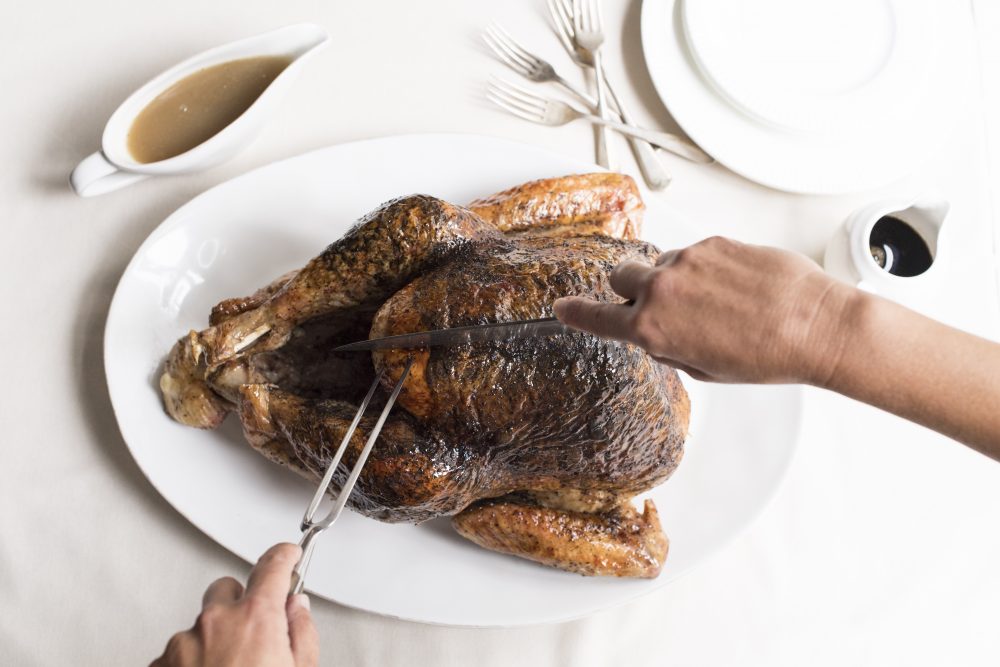If you’re cooking Thanksgiving dinner, you have enough to worry about. Between getting all the food out on the table at a reasonable hour and temperature, and keeping family disputes at bay, you’ve got your hands full. Don’t let misinformation about cooking—or eating—turkey, lead you astray.
Here, grilling expert and cookbook author Meathead Goldwyn and Milk Street Radio regular Dr. Aaron Carroll set the record straight on five common myths around your Thanksgiving turkey. So you can focus on the important things, like these almost effortlessly flavorful mashed potatoes or this lighter, fresher take on pumpkin pie.
Myth: Roasting Breast-Side Down Captures Juices
The Truth: The idea that juices from the legs will drip down and create juicier breasts is a common misconception. As Meathead puts it, “There are no super highways in those turkey breasts. The juices are trapped inside muscle fibers. They’re not going anywhere. Cooking it upside down doesn’t make a difference.” If you’re flipping your bird to keep the breasts away from the heat source, that’s a different story.
Myth: A Pop-Up Timer Indicates When the Bird Is Cooked
The Truth: “The first thing I do when I get a turkey is a throw that thing out,” Meathead says about the pop-up timer that comes in some birds. The best way to tell if your turkey—or any meat for that matter—is cooked is by using a thermometer. “Thermometers tell you not only when the turkey is at an optimal tenderness and juiciness, but also when it’s safe,“ Meathead says.
Myth: You Should Cook Your Turkey on a Roasting Rack
The Truth: “The worst thing you can do with a turkey is to put it in a roasting pan with water in the bottom,” Meathead warns. The common setup, a V- or U-shaped rack that sits over water meant to keep drippings from flaring up, will only lead to flabby meat, he says, because the water keeps the air under the bird cooler than in the rest of the oven. The walls of the roasting rack also limit air circulation, which in turns limits the potential for extra crispy skin. It’s better to roast the turkey directly on the oven’s wire rack, with a large pan underneath for collecting drippings, Meathead suggests.
Myth: Basting Throughout Cooking Makes for Juicier Meat
The Truth: Don’t waste your time basting throughout the cooking, Meathead says. It won't leave you with juicier meat, but may slow down the cooking time and cause soggy meat. (Try our Brown Ale Turkey and Gravy recipe that calls for basting the bird twice: once at the beginning and once half way through and includes an unexpected but powerful ingredient.)
Myth: Turkey Makes You Tired
The Truth: According to Milk Street Radio regular Dr. Aaron Carroll, turkey isn’t the reason you feel tired after Thanksgiving dinner. First, turkey doesn’t contain all that much tryptophan—the much-maligned amino acid on which people blame post-meal fatigue. Second, tryptophan only absorbs well on an empty stomach... Enough said. The more likely cause of your need for a post-Thanksgiving dinner nap? The huge meal, the alcohol, spending 10 hours with all your relatives: You decide.
For more, check out our best Thanksgiving recipes, tips, videos and products.




